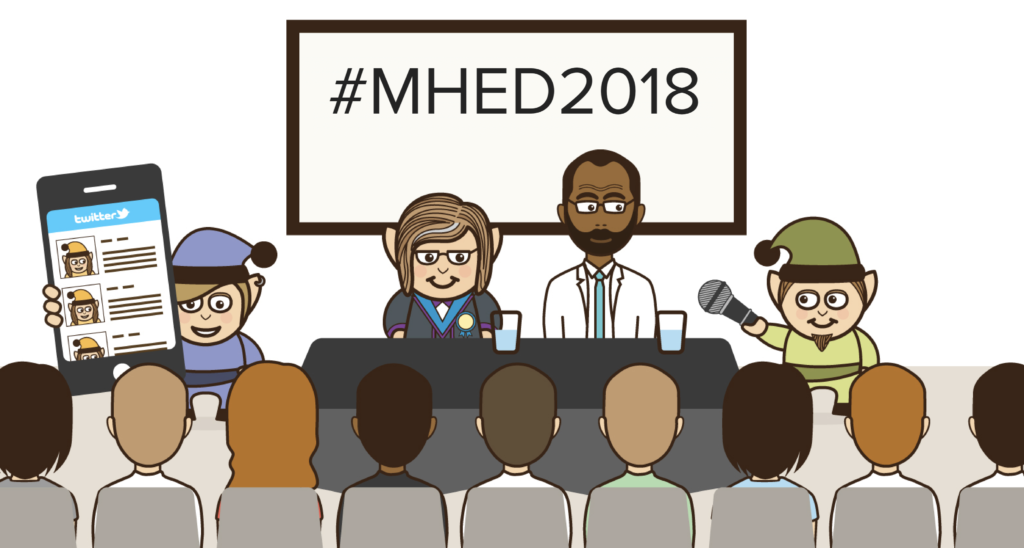
Bullying is purposeful negative behaviour enacted upon an individual or group that is repeated over time in the context of an interpersonal relationship that involves an imbalance of power favouring the perpetrator(s) (Olweus & Limber, 2018). It is believed to be a common occurrence in childhood and adolescence (Bullying in childhood: we need to do better. Ford, 2018), though prevalence estimates vary significantly as a function of methodological issues such as informant, response format, and time frame (Zych, Baldry & Farrington, 2017). Bullying has been rigorously demonstrated to be a powerful predictor of the onset of mental health difficulties (Bullying in childhood: cause or consequence of mental health problems? Brugger, 2017), in addition to a range of other negative outcomes (e.g. poorer general health and academic attainment) throughout the lifespan (Wolke & Lereya, 2015)
The advent of the digital age heralded a new medium for bullying behaviour, commonly referred to as ‘cyberbullying’ (Cyberbullying and mental health in young people. O’Brien, 2014). Cyberbullying takes place via electronic forms of contact or communication (e.g. email, text messaging, social media) (Olweus & Limber, 2018). Recent years have seen increasing concern about cyberbullying (Cyberbullying: comparatively rare, not especially damaging or pernicious. Reynolds, 2017), as part of a broader campaign in which social media use and screen time have been cast as ‘folk devils’ and blamed for apparent increases in the prevalence of mental health difficulties among children and young people (Humphrey, 2018).
Questions about cyberbullying
- Is it best conceptualised as a subset of ‘traditional’ forms of bullying (e.g. verbal, physical, indirect/relational), or should it be considered a distinct phenomenon?
- How prevalent is it?
- How much does it overlap with traditional forms of bullying?
- What are its consequences?
These questions are addressed in the focus of this blog: Olweus and Limber’s (2018) critical analysis of the current state of cyberbullying research.

This authoritative position piece asks a number of important questions about cyberbullying research.
Methods
The paper is a position piece involving a narrative review of selected studies that address the questions highlighted above. Particular attention is paid to prevalence estimates, overlap with traditional bullying, and consequences of cyberbullying.
Results
Mirroring research on traditional forms of bullying, the authors report that prevalence estimates for cyberbullying vary as a function of the methodological issues noted earlier. Aligning with a recent study reported on the Mental Elf blog by Shirley Reynolds (2017), they also note that cyberbullying appears to be relatively rare when compared to, for example, direct verbal bullying. Interestingly, the authors argue that findings indicate no systematic change in prevalence over time. Thus, cyberbullying does not appear to be on the increase.
In terms of overlap, the authors highlight two studies that indicate cyberbullying is most commonly experienced by children and young people who are also the victims of traditional forms of bullying, with only around 10% exposed solely to the former. As a direct consequence, they argue that it is difficult to isolate specific consequences of cyberbullying. The authors do, however, discuss the findings of some well designed research that assess the incremental effects of cyberbullying (that is, after the influence of exposure to traditional bullying has been taken into account). Such studies typically report only modest (or sometimes no) additional effects of cyberbullying on mental health outcomes.

Contrary to popular opinion, and despite the huge rise in digital connectivity, the evidence indicates that cyberbullying has not increased over time.
Conclusions
Olweus and Limber tentatively conclude that the evidence base supports a view of cyberbullying as a subset of traditional bullying, and one that still affects a markedly smaller proportion of children and young people than verbal, physical, and indirect/relational forms, despite the increasing centrality of their ‘digital lives’.

There is insufficient evidence to support the view of cyberbullying as something distinct from traditional forms of bullying.
Strengths and limitations
A key strength of this paper is the authors’ willingness to challenge some ‘assumed truths’ relating to cyberbullying, and their judicious use of empirical evidence to do so. It is an engaging and cogently argued piece that I would strongly recommend to anyone with an interest in (cyber)bullying. Additional credit is due for the authors’ annotated reference list, in which they highlight important sources of further reading.
However, given that they present a selective narrative review, as opposed to a systematic literature review (SLR), questions do remain about the extent to which the authors’ conclusions fully and accurately represent the state of the field. In these kinds of papers, it can be easy for our existing beliefs to shape what and how research is reported (of course, the same may also be said of SLRs, but to a much lesser extent!). A good example can be seen in the manner in which the authors emphasise the research indicating 90% overlap between cyberbullying and traditional bullying. Though they then go on to cite studies where the degree of overlap is considerably less, this apparent incongruence is not fully explored, perhaps because doing so may undermine the authors’ central thesis. Finally, reference is made to ‘facts’ in the conclusion; the use of this term does not align with the variable nature of much of the research in the field.

Is it time for a systematic literature review of cyberbullying research?
Taking #MHED2018 Beyond the Room!
Look out for live tweeting and podcasting from the #MHED2018 conference on 28-29 June 2018. This landmark conference brings together leading UK and international researchers, policy-makers, educators and allied professionals to explore the intersection between education and mental health and set the future research agenda for the field. The keynote speakers are Louise Arseneault, Mick Cooper, Natasha Devon, Celene Domitrovich, Kate Martin and Dan Olweus.
Read all the MHED2018 blogs that accompany this conference.
You can find out more about our #BeyondTheRoom social media service at beyondtheroom.net

Follow #MHED2018 on Twitter for the latest research, policy and practice relating to education and mental health.
Conflicts of interest
Neil has an academic interested in school mental health, and some of his research includes a focus on bullying (e.g. Humphrey & Hebron, 2014).
Links
Primary paper
Olweus, D. & Limber, S.P. (2018). Some problems with cyberbullying research. Current Opinion in Psychology, 19, 139-143. DOI:10.1016/j.copsyc.2017.04.012
Other references
Bullying in childhood: cause or consequence of mental health problems? #AntiBullyingWeek
Humphrey, N. (2018). Are the kids alright? Examining the intersection between education and mental health. Psychology of Education Review, 42.
Humphrey, N. & Hebron, J. (2014). Bullying and autism: a state of the field narrative synthesis. International Journal of Inclusive Education, 19, 845-862. DOI: https://doi.org/10.1080/13603116.2014.981602
Cyberbullying: comparatively rare, not especially damaging or pernicious
Zych, I., Baldry, A. C. & Farrington, D. P. (2017). School bullying and cyberbullying: Prevalence, characteristics, outcomes, and prevention. In Van Hasselt, V.B. & Bourke, M. L. (Eds.) Handbook of behavioral criminology, pp.113-138. New York: Springer.
Wolke, D. & Lereya, T. (2015). Long-term effects of bullying. Archives of Disease in Childhood, 100, 879-885. DOI: http://dx.doi.org/10.1136/archdischild-2014-306667
Photo credits
- Photo by Tristan Colangelo on Unsplash

[…] Cyberbullying research: what do we really know? #MHED2018 […]